
The 1969 Dodge Charger is one of the most iconic, desirable, and sought-after American muscle cars. With average values approaching six figures on the RT, it has also become one of the most expensive.
Used in hit movies and TV shows like the Fast & Furious and The Dukes of Hazzard, these shows helped keep this archetypal muscle car in the spotlight and buyer’s hearts for the last five decades.
In 1968, the second-generation Charger received a complete redesign. However, in 1969, it only received a few minor changes, including a vertical center divider in the grilles and horizontal rectangular taillights.
Available in five different models, buyers chose from a base model, Special Edition “SE” that added creature comforts, RT that was the supercar, and the NASCAR-ready Daytona and 500.
Let’s look at ten fascinating facts about the 1969 Dodge Charger, shall we?
Table of Contents
1969 Dodge Charger Facts
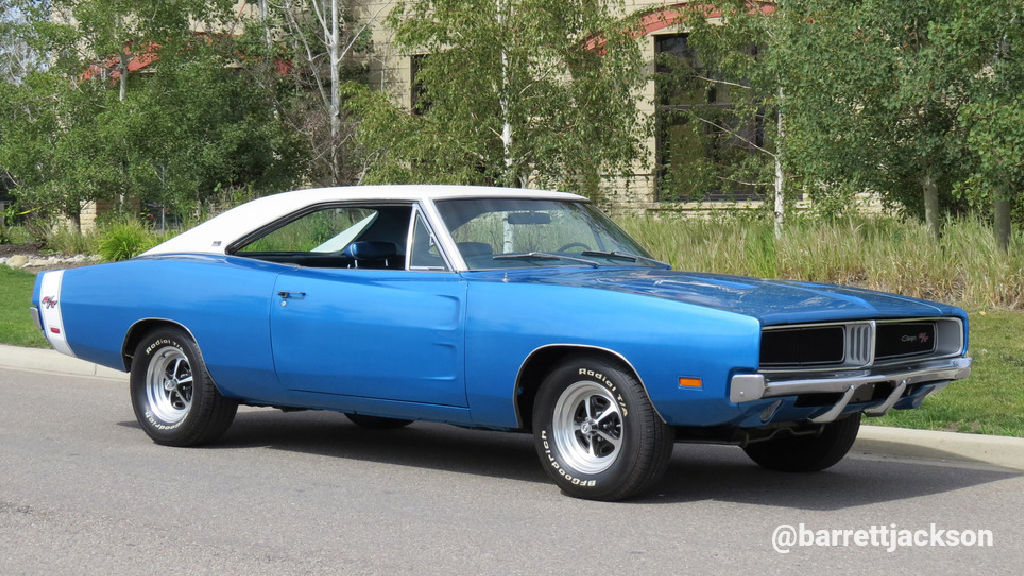
How much did a Dodge Charger cost in 1969?
Muscle cars during the mid to late 60s were often priced between $3,000 and $4,000—the 69 Dodge Charger was no different.
With five different versions available, there was a model for every budget on the price spectrum. The cheapest Dodge Charger was the base 6-cylinder Charger, while the most expensive was the Charger Daytona—especially when equipped with a 426 Hemi engine.
| Model | Base Price |
|---|---|
| Charger 6cyl. | $3,003 |
| Charger 8cyl. | $3,109 |
| Charger RT | $3,575 |
| Charger 500 | $3,843 |
| Charger Daytona | $3,993 |
Popular Options
While many muscle car packages came standard with specific options, there was always a host of additional choices one could select when going through the order form at the dealership.
Some of the most popular option upgrades, and their respective pricing, can be found below.
| Option Code | Option Name | Cost |
|---|---|---|
| E74 | 426 Hemi | $648.20 |
| A33 | Track Pak | $142.85 |
| A34 | Super Track Pak | $256.45 |
| A47 | Special Edition Package | $161.85 |
| N25 | Tach and clock | $50.15 |
| R21 | Solid State AM/FM Radio | $134.95 |
| R31 | Rear speaker | $15.15 |
| D91 | Sure-Grip differential | $42.35 |
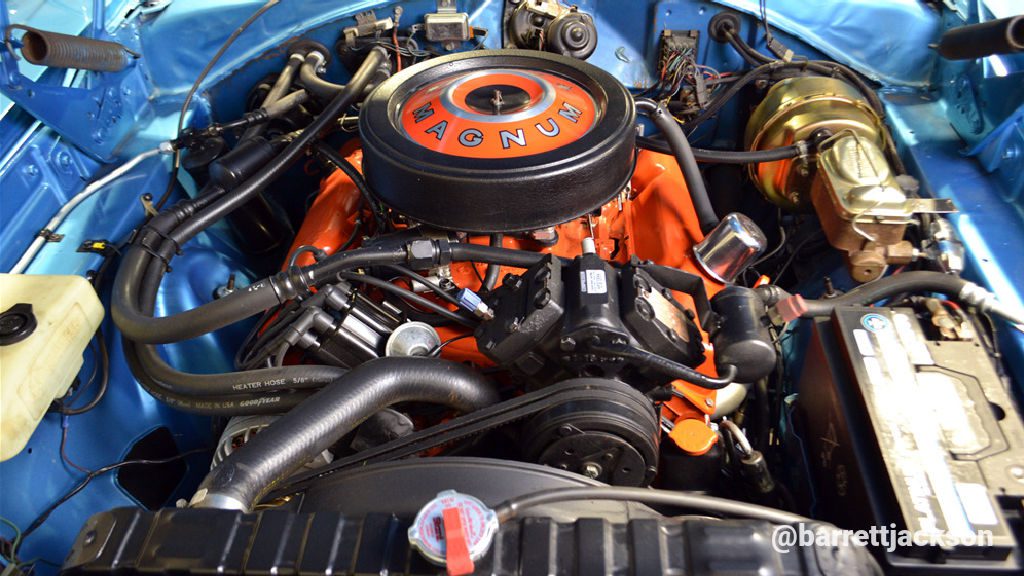
What motor did the 1969 Dodge Charger have?
The 69 Dodge Charger had six engine options to choose from, ranging from the fuel-efficient 6-cylinder single-barrel carburetor to the fire-breathing 426 Hemi fed by dual quad four-barrel carburetors.
| Type | Displacement | Carburation |
|---|---|---|
| 6-cyl. | 225cid | 1bbl |
| 8-cyl. | 318cid | 2bbl |
| 8-cyl. | 383cid | 2bbl |
| 8-cyl. | 383cid Hi-Perf | 4bbl |
| 8-cyl. | 440cid Hi-Perf | 4bbl |
| 8-cyl. | 426cid Hi-Perf | 2x 4bbl |
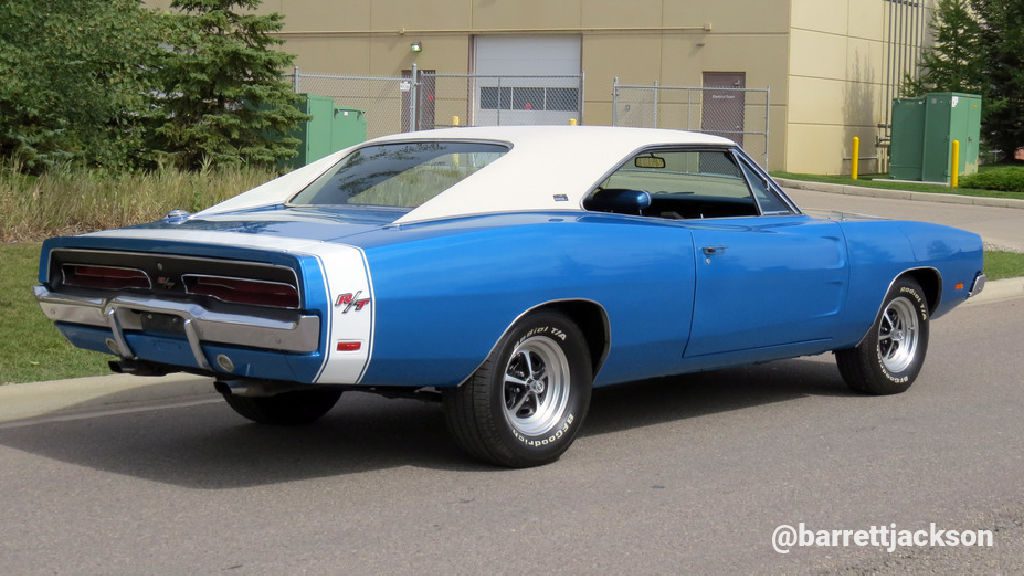
How much horsepower does a 1969 Dodge Charger have?
The amount of horsepower a 69 Charger had depended on which engine was powering it. Horsepower ranged from 145 with the 6-cylinder all the way up to 425 horsepower with the 426 Hemi.
| Type | Displacement | Carburation | Horsepower | Torque |
|---|---|---|---|---|
| 6-cyl. | 225cid | 1bbl | 145 | 215 lb-ft |
| 8-cyl. | 318cid | 2bbl | 230 | 340 lb-ft |
| 8-cyl. | 383cid | 2bbl | 290 | 390 lb-ft |
| 8-cyl. | 383cid Hi-Perf | 4bbl | 330 | 425 lb-ft |
| 8-cyl. | 440cid Hi-Perf | 4bbl | 375 | 480 lb-ft |
| 8-cyl. | 426cid Hi-Perf | 2x 4bbl | 425 | 490 lb-ft |
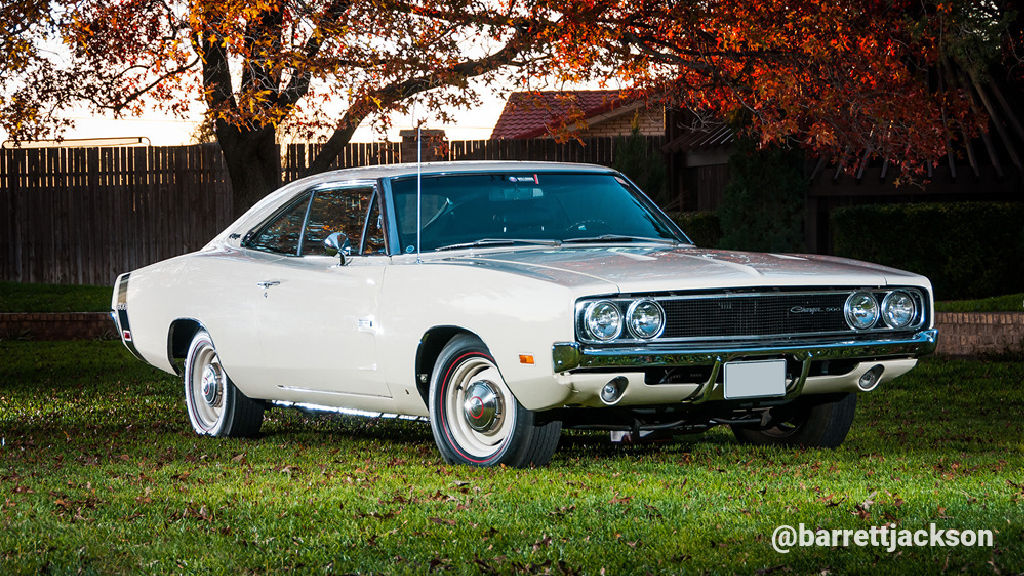
How many 1969 Dodge Chargers were made?
Production figures for the quintessential 1969 Dodge Charger swole to 104,978 units, an increase of 8,878 units compared to the 96,100 that rolled off the assembly line in 1968.
Total Production Figures (USA & Export)
| Model | Production Figures |
|---|---|
| Charger RT | 19,298 |
| Non-Charger RT | 85,680* |
| Total | 104,978 |
US Production Figures
69 Dodge Charger RT
| Model | Production Figures |
|---|---|
| Charger RT 440 | 18,344 |
| Charger RT 426 Hemi | 432 |
| Total | 18,776 |
69 Dodge Charger 500
| Model | Production Figures |
|---|---|
| Charger 500 440 | 325 |
| Charger 500 426 Hemi | 67 |
| Total | 392 |
69 Dodge Charger Daytona
| Model | Production Figures |
|---|---|
| Charger Daytona 440 | 433 |
| Charger Daytona 426 Hemi | 70 |
| Total | 503 |
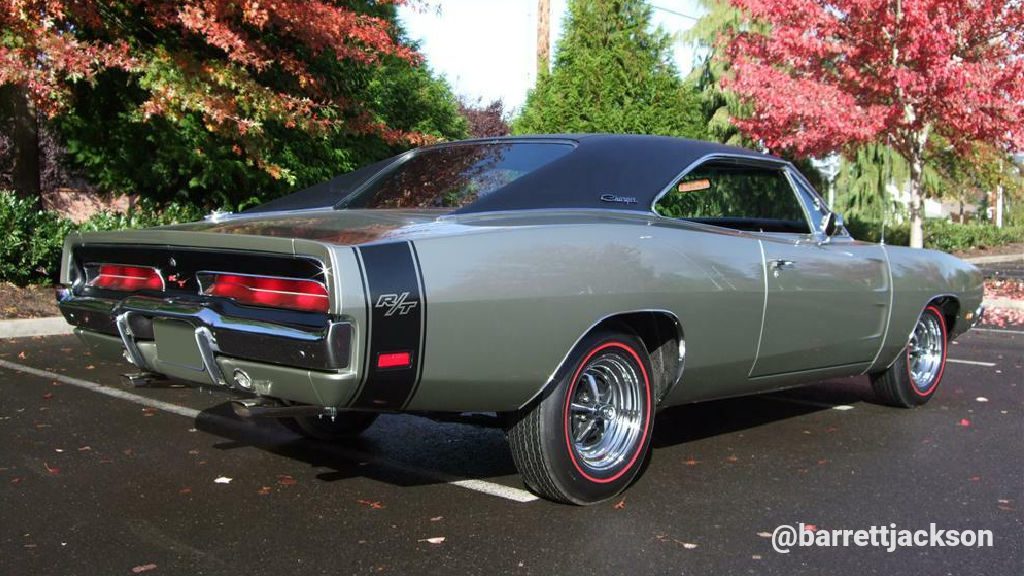
How fast was a 1969 Dodge Charger?
The 69 Charger was capable of 13-second quarter-mile passes, traveling between 100-104 miles per hour when equipped with a 440 or a 426 Hemi. At NASCAR, it also reached top speeds of 200 mph.
During the inaugural Talladega 500 in September 1969, driver Charlie Glotzback #88 qualified with a white knuckle speed of 199.446 miles per hour—a world record at the time.
In the April 1969 issue of Hi-Performance Cars magazine, a Hemi-powered ’69 Dodge Charger 500 ran a 13.35-second quarter-mile, traveling at 104 miles per hour.
However, according to Super Stock & Drag Illustrated magazine, a 440-powered Charger RT ran a 13.83-second quarter-mile at 102.2 miles per hour in that same month and year.
Whether on the oval or at the quarter-mile track, a 69 Charger was a force to be reckoned with.
| Spec | Measurement |
|---|---|
| Shipping Weight | 3,103 lbs |
| Vehicle Length | 207.9 in |
| Wheelbase | 117 in |
| Width | 76.7 in |
| Height | 53.2 in |
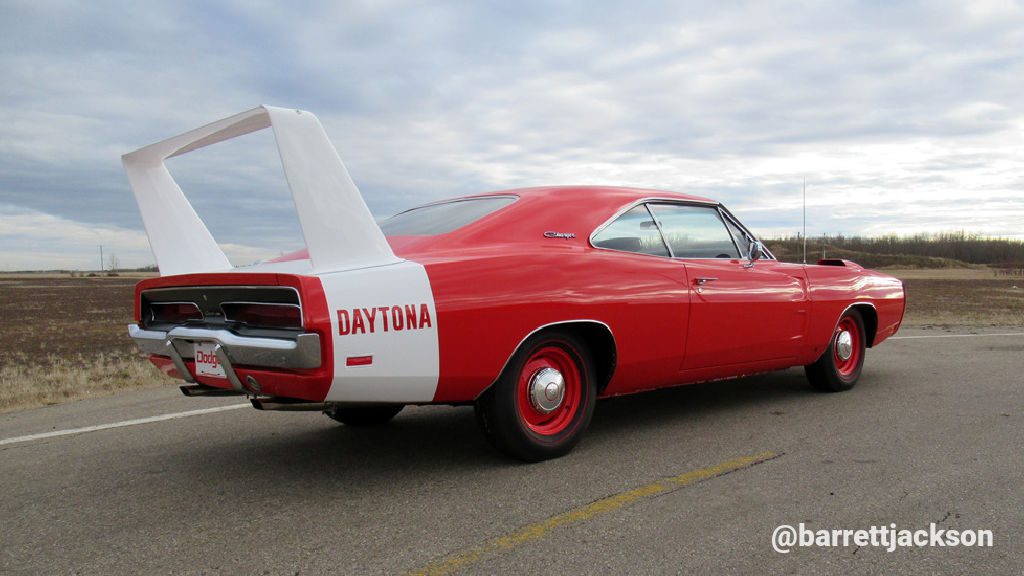
How many 1969 Dodge Charger Daytonas were made?
The 69 Dodge Charger Daytona was a one-year-only option engineered to dominate NASCAR races by reaching 200 miles per hour top speeds.
Homologation requirements mandated that 500 models be produced to race at NASCAR, which meant Dodge had to produce that many units to be sold to the public before it could race.
Dodge beat the homologation production requirement by three units, producing 503 total 1969 Dodge Charger Daytonas. All Charger Daytona started life with a 69 Charger RT base.
Its aerodynamic nose cone, 23-inch tall stabilizing wing on the rear decklid, and flush rear window helped Dodge win two races in 1969 with another four in the 1970 racing season.
Two engine options powered the Charger Daytona, including the mighty 440cid/375hp V-8 and the 426cid/425hp V-8. Choice of 3-speed automatic or 4-speed manual transmissions was available.
| Model | Production Figures |
|---|---|
| Charger Daytona 440 | 433 |
| Charger Daytona 426 Hemi | 70 |
| Total | 503 |
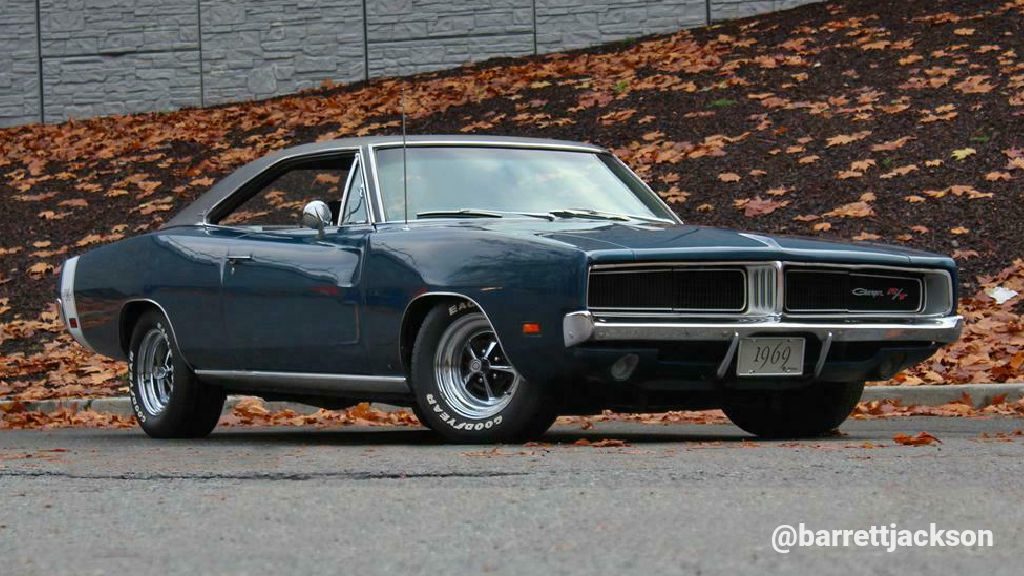
What were the factory paint colors on a 1969 Dodge Charger?
Dodge sprayed 19 paint colors on the 69 Charger, including shades of blue, green, brown, yellow, turquoise, red, silver, white, and black.
| Code | Color Name |
|---|---|
| A4 | Silver Metallic |
| B3 | Light Blue Metallic |
| B5 | Bright Blue Metallic |
| B7 | Medium Blue Metallic |
| F3 | Light Green Metallic |
| F5 | Medium Green Metallic |
| F6 | Bright Green Metallic |
| F8 | Dark Green Metallic |
| Q5 | Bright Turquoise Metallic |
| R4 | Bright Red |
| R6 | Red |
| T3 | Light Bronze Metallic |
| T5 | Copper Metallic |
| T7 | Dark Bronze Metallic |
| W1 | White |
| X9 | Black |
| Y2 | Yellow |
| Y3 | Cream |
| Y4 | Gold Metallic |
In addition, there were four vinyl top colors, including black, white, green, and tan. New for 1969 was the single wide Bumblebee stripe with three color options, including black, white, and red.
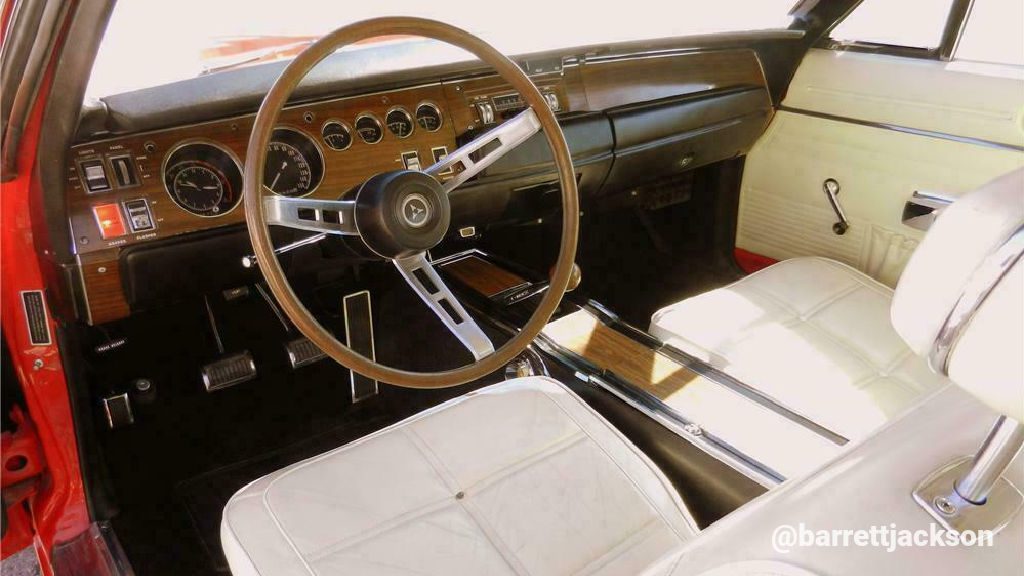
What interior colors did a 1969 Dodge Charger have?
In addition to the 27 paint colors, Dodge offered seven interior colors on all models of the 69 Charger, including the Base, SE, RT, and Daytona.
Stunning color combinations include Black with Red interior, Red with Bright Red interior, Orange with White interior, Blue with Blue interior, and Turquoise with White interior.
Bucket seat coverings were available in vinyl, leather, and cloth with vinyl. However, not all color options were available in leather or cloth and vinyl.
Following are the color codes for each type of bucket seat cover.
Vinyl Bucket Seats
| Code | Color |
|---|---|
| C6D | Blue |
| C6G | Green |
| C6R | Red |
| CGT | Tan |
| CGW | White |
| C6X | Black |
| C6W | White/Black |
Leather Bucket Seats
| Code | Color |
|---|---|
| CRD | Blue |
| CRG | Green |
| CRT | Tan |
| CRX | Black |
Cloth & Vinyl Bucket Seats
| Code | Color |
|---|---|
| C5X | Black |
The interior came with two different front seat options: bucket seats or buckets with a buddy seat that converted the front bucket seats into a bench seat and provided seating for up to three people.
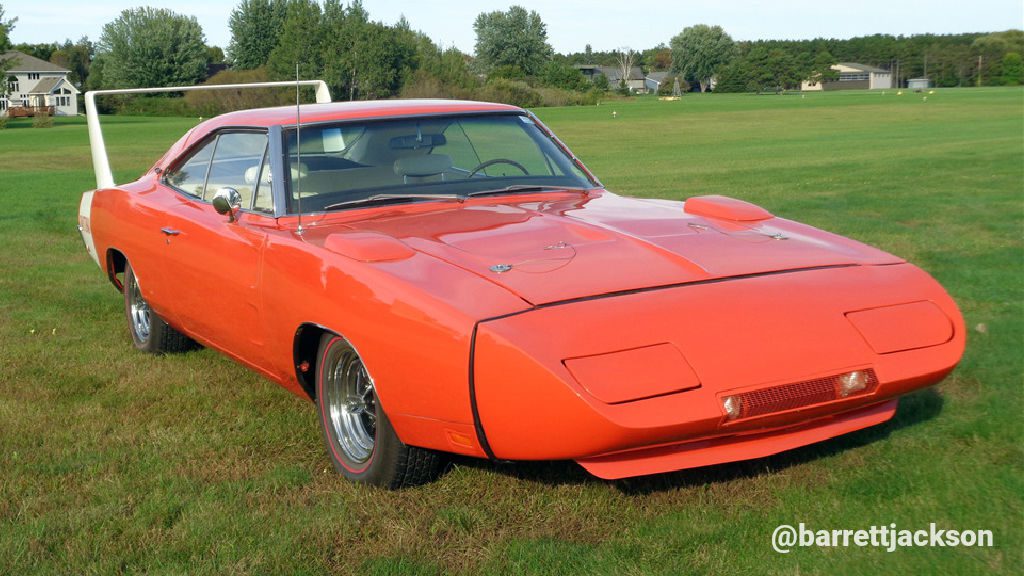
How much is a 1969 Dodge Charger worth?
Sourced from Hagerty data, the value of 69 Charger ranges from $26k-$769k and is based on several variables, including the model, condition, engine, transmission, and color.
In terms of condition, the low end of the value spectrum starts with “Fair condition, followed by “Good”, then “Excellent”, and then the highest condition class “Concours” which is the most valuable.
Hagerty determines their values from four primary sources, including peer-to-peer sales (40%), dealer sales (25%), auctions (20%), and asking price (15%).
69 Dodge Charger Base Values
| Engine | Value | Average Value |
|---|---|---|
| 318cid/230hp | $26k-73k | $44,000 |
| 383cid/290hp | $30k-87k | $38,100 |
| 383cid/330hp | $34k-97k | $49,800 |
69 Dodge Charger 500 Values
| Engine | Value | Average Value |
|---|---|---|
| 440cid/375hp | $56k-159 | $81,300 |
| 426cid/425hp | $130k-310k | $163,000 |
69 Dodge Charger R/T Values
| Engine | Value | Average Value |
|---|---|---|
| 440cid/375hp | $64k-164k | $87,500 |
| 426cid/425hp | $125k-285k | $150,000 |
69 Dodge Charger Daytona Values
| Engine | Value | Average Value |
|---|---|---|
| 440cid/375hp | $190k-450k | $248,000 |
| 426cid/425hp | $318k-769k | $408,000 |
Value Adjustments
- + 15% for Special Edition “SE” package
- + 20% for 4-speed
- – 10% for automatic
- Colors can make an astonishing difference in value and scalability.
Values are current as of the publication date of this article.

How do you decode a 1969 Dodge Charger VIN?
The vehicle identification number (VIN) is located on the driver’s side dashboard and is visible through the windshield. The alphanumeric codes break down as follows:
First Digit: Car Line
| Code | Line |
|---|---|
| X | Charger |
Second Digit: Price Class
| Code | Class |
|---|---|
| P | Charger (base) |
| S | Charger RT |
| X | Charger Daytona or Charger 500 |
Third & Fourth Digits: Body Type
| Code | Body |
|---|---|
| 29 | 2 door sports hardtop |
Fifth Digit: Engine
| Code | Engine |
|---|---|
| B | 225cid 6 Cyl 1v |
| F | 318cid V-8 2v |
| G | 383cid V-8 2v |
| H | 383cid V-8 Hi-Performance 4v |
| J | 426cid V-8 Hemi 2x4v |
| L | 440cid V-8 Hi-Performance 4v |
Sixth Digit: Year
| Code | Year |
|---|---|
| 9 | 1969 |
Seventh Digit: Assembly Plant
| CODE | Assembly Plant |
|---|---|
| A | Lynch Rd., Detroit, MI |
| B | Hamtramck, MI |
| C | Jefferson Ave., Detroit, MI |
| D | Belvidere, IL |
| E | Los Angles, CA |
| F | Newark, DE |
| G | St. Louis, MO |
| R | Windsor, Ontario, Canada |
| P | Wyoming |
Last Six Digits: Sequence Number
| Code | Sequence Number |
|---|---|
| 123456 | Six-digit production sequence number |
Well, there you have ten fascinating 1969 Dodge Charger facts and what makes it one of the best American Muscle Cars. Which one surprised you the most? What is your first memory of seeing this car? Do you own one? Let us know below!
Take Our Poll!
"*" indicates required fields
Ryan
Ryan has owned muscle cars since 1986 and currently owns a 1972 Dodge Charger Rallye. He combines passion and experience to create engaging content for fellow muscle car enthusiasts. In 2018, he founded Muscle Cars Illustrated, authoring hundreds of articles on tips, history, and trends in the muscle car industry. He attends national car shows, auctions, and museums to stay current with the latest developments in the muscle car industry.Comments
Comments are closed.

I own one
I like the Daytona Chargers w/ all options Including the 426 Hemi 4-speed. But my most favorite Mopar of all time is the 1969 Plymouth GTX 426 Hemi 4-Speed 4:10 sure grip rear end front bucket sets w/ pistol grip shifter w/ roadrunner red.
My cousin Harry had a 383 SuperBee Charger. It was the first car I got to 100mph! Only took a few seconds! Those were the days!